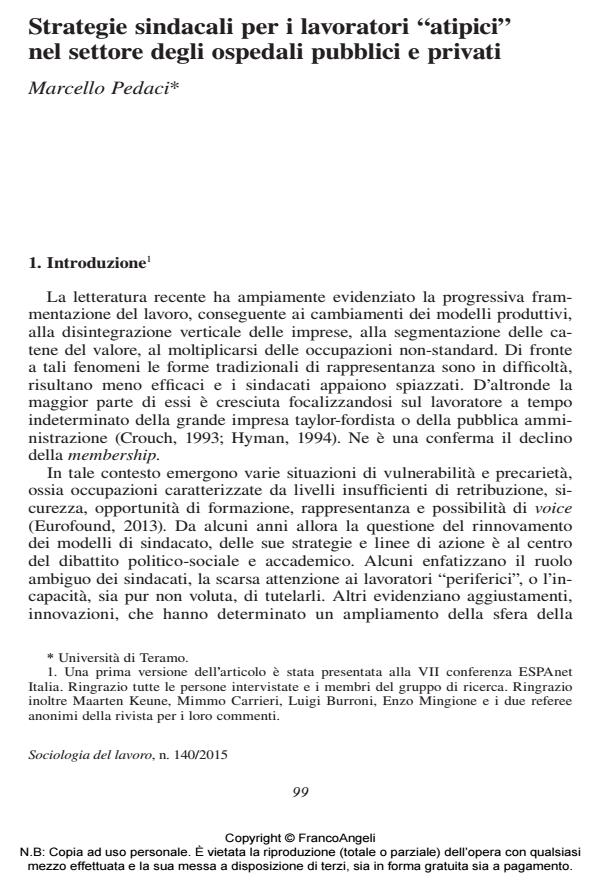Trade unions strategies for "atypical" workers in hospitals sector
Journal title SOCIOLOGIA DEL LAVORO
Author/s Marcello Pedaci
Publishing Year 2015 Issue 2015/140
Language Italian Pages 15 P. 99-113 File size 128 KB
DOI 10.3280/SL2015-140007
DOI is like a bar code for intellectual property: to have more infomation
click here
Below, you can see the article first page
If you want to buy this article in PDF format, you can do it, following the instructions to buy download credits

FrancoAngeli is member of Publishers International Linking Association, Inc (PILA), a not-for-profit association which run the CrossRef service enabling links to and from online scholarly content.
Following the academic debate on trade unions responses to non-standard forms of employment, the article analyses unions strategies addressing the issue of rights and working conditions of "atypical" workers in the Italian hospitals sector. Drawing upon a qualitative approach, it examines the instruments used: from collective bargaining to dialogue with political institutions and mobilisation. The analysis shows a development towards inclusive strategies, based on a progressive adjustment and enlargement of the existing practices of representation, without substantial changes in the way of operating. Such strategies have obtained important outcomes; however they are not sufficient. Situations of problematic working conditions and unequal treatment still exist. Reducing them requires more innovative changes in unions actions, together with much more resources and dedication by counterparts and political institutions.
Keywords: Atypical employment, working conditions, trade unions, industrial relations
- The variable geometry of bargaining: implementing unions' strategies on remote work in Italy Anne-Iris Romens, Valeria Piro, Francesco E. Iannuzzi, in STUDI ORGANIZZATIVI 1/2022 pp.129
DOI: 10.3280/SO2022-001006
Marcello Pedaci, Strategie sindacali per i lavoratori "atipici" nel settore degli ospedali pubblici e privati in "SOCIOLOGIA DEL LAVORO " 140/2015, pp 99-113, DOI: 10.3280/SL2015-140007